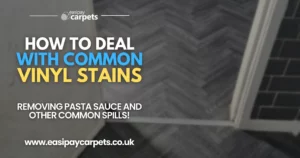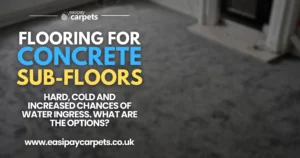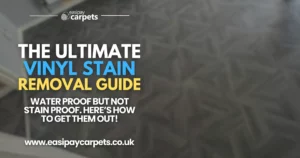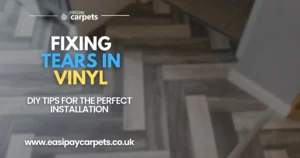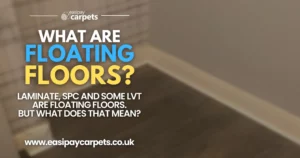
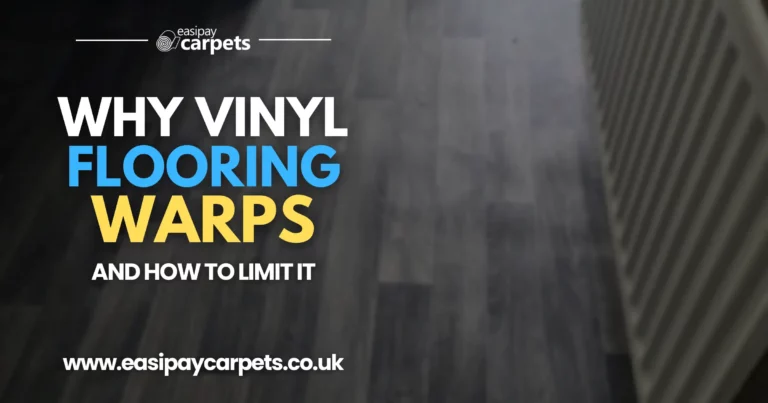
Why Vinyl Flooring Warps And How To Fix It.
Vinyl flooring has gained immense popularity for its durability, affordability, and variety of designs. However, like any flooring material, vinyl is not entirely immune to issues, with warping being one of the most common concerns. Vinyl floor warping can affect both the appearance and functionality of your floors, leading to costly repairs if not addressed. Understanding the causes and knowing how to prevent vinyl flooring from warping can save you time, money, and frustration in the long run.
What Causes Vinyl Floor Warping?
Before diving into prevention tips, it’s essential to understand what causes vinyl floor warping. Several factors can contribute to this issue, and recognising them can help you take proactive measures.
Excessive Moisture
- One of the primary culprits behind vinyl floor warping is moisture. Vinyl flooring is water-resistant, but excessive moisture from spills, leaks, or high humidity can seep into the seams or under the flooring, causing it to expand and warp.
Improper Installation
- If vinyl flooring is not installed correctly, it can lead to warping. Issues like uneven subfloors, inadequate adhesive, or insufficient acclimation time before installation can cause the vinyl to warp as it settles.
Temperature Fluctuations
- Extreme temperature changes can cause vinyl flooring to expand and contract, leading to warping. This is particularly common in areas that experience significant temperature shifts or where the flooring is exposed to direct sunlight.
Heavy Furniture or Appliances
- Heavy furniture or appliances placed directly on vinyl flooring without proper protection can cause indentations and stress, leading to warping over time.
Subfloor Issues
- Problems with the subfloor, such as unevenness, moisture retention, or structural damage, can also contribute to vinyl floor warping. The subfloor needs to be in good condition to provide a stable foundation for the vinyl.
How to Prevent Vinyl Floor Warping
Now that we understand the causes, let’s explore some effective strategies to prevent vinyl floor warping and keep your floors looking pristine.
Control Moisture Levels
Immediate Spill Clean-up: Always clean up spills immediately to prevent moisture from seeping into the seams or under the vinyl flooring. Use a dry cloth or mop to absorb the spill and ensure the area is thoroughly dried.
Use Dehumidifiers: In areas prone to high humidity, such as basements or bathrooms, consider using a dehumidifier to reduce moisture levels. This can help prevent the flooring from absorbing excess moisture and warping.
Waterproofing Measures: For areas like kitchens or bathrooms, where moisture is a constant threat, consider applying a moisture barrier under the vinyl flooring during installation. This adds an extra layer of protection against warping.
Ensure Proper Installation
Subfloor Preparation: Ensure that the subfloor is clean, dry, and level before installing vinyl flooring. Any imperfections in the subfloor can lead to uneven flooring and potential warping. If the subfloor has moisture issues, address these before installation.
Acclimate the Flooring: Allow your vinyl flooring to acclimate to the room’s temperature and humidity for at least 24-48 hours before installation. This helps prevent expansion or contraction after installation, reducing the risk of warping.
Use the Right Adhesive: If you’re installing glue-down vinyl flooring, make sure to use the recommended adhesive. Insufficient or inappropriate adhesive can cause the vinyl to lift and warp over time.
Maintain Consistent Temperature
Avoid Extreme Temperatures: Keep the room temperature consistent to prevent the vinyl from expanding or contracting. In areas where direct sunlight hits the floor, use blinds or curtains to block excessive heat.
Climate Control: Consider using air conditioning or heating systems to maintain a stable indoor climate. This is particularly important in spaces like sunrooms or conservatories, where temperature fluctuations are more likely.
Protect Your Floors
Furniture Pads: Place furniture pads under heavy furniture or appliances to distribute the weight more evenly and prevent indentations that can lead to warping.
Use Rugs in High-Traffic Areas: In areas with heavy foot traffic, use rugs or mats to protect the vinyl flooring. This not only prevents warping but also helps maintain the floor’s appearance.
Avoid Dragging Furniture: When moving furniture, lift it instead of dragging it across the floor. Dragging can cause scratches and stress on the vinyl, leading to potential warping.
Regular Maintenance
Routine Cleaning: Regularly sweep or vacuum your vinyl floors to remove dirt and debris that can scratch or damage the surface. Follow up with a damp mop and a mild cleaner to keep your floors in top condition.
Inspect for Early Signs of Warping: Regularly inspect your vinyl flooring for any early signs of warping, such as lifting edges or bubbles. Address these issues promptly to prevent further damage.
What to Do If Your Vinyl Flooring Warps
Despite your best efforts, vinyl flooring can sometimes warp due to unforeseen circumstances. If you notice warping, here’s what you can do:
Identify the Source of Moisture:
- If the warping is caused by moisture, identify and eliminate the source. This might involve fixing a leaky pipe, addressing subfloor moisture, or using a dehumidifier to reduce humidity levels.
Flatten the Warped Area:
- For minor warping, you can try to flatten the area by placing a heavy object on top of the warped section. Leave it in place for several days to see if the vinyl will return to its original shape.
Use a Heat Gun:
- In some cases, using a heat gun can help soften the vinyl, allowing you to flatten it back into place. However, this should be done cautiously to avoid damaging the flooring.
Professional Repair:
- If the warping is severe or widespread, it may be necessary to consult a professional. They can assess the situation and recommend repairs, which might include replacing the affected sections of the flooring.
Conclusion
Vinyl flooring is a durable and attractive option for many homes, but like any material, it requires proper care and maintenance to avoid issues like warping. By controlling moisture levels, ensuring correct installation, maintaining a stable temperature, and protecting your floors, you can prevent vinyl floor warping and enjoy the long-lasting beauty of your floors.
Taking the time to address potential problems before they occur can save you from costly repairs down the line. With the right approach, your vinyl floors can remain a stylish and functional part of your home for years to come.
Easipay Carpets can help you get brand new flooring without the high up-front cost – by simply letting you spread the cost of the flooring over time instead. There’s no interest on our plans so you aren’t spending a penny more than you would buying it outright and we include underlay, door trims, carpet grippers and laminate beading for free. Prices start from just £10 per week!
It starts with a free home appointment and quote, to get booked in at a time that suits you, tap the “Get Started” button below and fill out the contact form!
Still Got Questions? Here's 10 FAQs!
Yes, vinyl flooring can warp if it is exposed to excessive moisture, especially if water seeps into the seams or under the flooring.
You can try flattening the warped area by placing a heavy object on it or using a heat gun to soften and reshape the vinyl. If the issue persists, professional repair may be necessary.
High humidity can contribute to vinyl floor warping by causing the material to absorb moisture, leading to expansion and warping over time.
A clean, dry, and level subfloor made of plywood or concrete is ideal for vinyl flooring. Any moisture or unevenness in the subfloor can lead to warping.
Yes, allowing vinyl flooring to acclimate to the room’s temperature and humidity before installation helps prevent expansion or contraction that can cause warping.
Yes, heavy furniture or appliances can cause indentations and stress on vinyl flooring, leading to potential warping. Use furniture pads to distribute weight evenly.
Use curtains or blinds to block direct sunlight, which can cause the vinyl to expand and warp due to heat.
In high-moisture areas or over concrete subfloors, using a moisture barrier can help prevent warping by protecting the vinyl from excess moisture.
Minor warping can sometimes be repaired by flattening the area or using a heat gun. Severe warping may require professional repair or replacement of the affected sections.
Warping may be covered under warranty if it is due to manufacturing defects. However, damage caused by improper installation, excessive moisture, or other external factors may not be covered.

